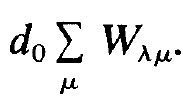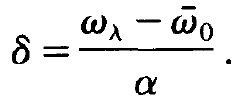
تاريخ الفيزياء

علماء الفيزياء


الفيزياء الكلاسيكية

الميكانيك

الديناميكا الحرارية


الكهربائية والمغناطيسية

الكهربائية

المغناطيسية

الكهرومغناطيسية


علم البصريات

تاريخ علم البصريات

الضوء

مواضيع عامة في علم البصريات

الصوت


الفيزياء الحديثة


النظرية النسبية

النظرية النسبية الخاصة

النظرية النسبية العامة

مواضيع عامة في النظرية النسبية

ميكانيكا الكم

الفيزياء الذرية

الفيزياء الجزيئية


الفيزياء النووية

مواضيع عامة في الفيزياء النووية

النشاط الاشعاعي


فيزياء الحالة الصلبة

الموصلات

أشباه الموصلات

العوازل

مواضيع عامة في الفيزياء الصلبة

فيزياء الجوامد


الليزر

أنواع الليزر

بعض تطبيقات الليزر

مواضيع عامة في الليزر


علم الفلك

تاريخ وعلماء علم الفلك

الثقوب السوداء


المجموعة الشمسية

الشمس

كوكب عطارد

كوكب الزهرة

كوكب الأرض

كوكب المريخ

كوكب المشتري

كوكب زحل

كوكب أورانوس

كوكب نبتون

كوكب بلوتو

القمر

كواكب ومواضيع اخرى

مواضيع عامة في علم الفلك

النجوم

البلازما

الألكترونيات

خواص المادة


الطاقة البديلة

الطاقة الشمسية

مواضيع عامة في الطاقة البديلة

المد والجزر

فيزياء الجسيمات


الفيزياء والعلوم الأخرى

الفيزياء الكيميائية

الفيزياء الرياضية

الفيزياء الحيوية

الفيزياء العامة


مواضيع عامة في الفيزياء

تجارب فيزيائية

مصطلحات وتعاريف فيزيائية

وحدات القياس الفيزيائية

طرائف الفيزياء

مواضيع اخرى
Quantitative treatment of hole burning. Single mode laser action of an inhomogeneously broadened line
المؤلف:
H. HAKEN
المصدر:
LASER LIGHT DYNAMICS
الجزء والصفحة:
vol 2 ، p85
26-12-2016
1636
Quantitative treatment of hole burning. Single mode laser action of an inhomogeneously broadened line
We now return to single mode laser action in a solid state laser with an inhomogeneously broadened line. We start from the mode which we write down for the special case of a single mode where we drop the index A of n but retain it for sake of clarity in Wλμ. Neglecting as usual spontaneous emission this equation reads
 (1.1)
(1.1)
We insert in it the saturated inversion reads
 (1.2)
(1.2)
We adopt running waves so that Wλμ does no more depend on the space coordinate x. Using the explicit form of Wλμ as and replacing the index μ by I we may write
 (1.3)
(1.3)
where we have used the abbreviation
 (1.4)
(1.4)
By inserting (1.2) into (1.1) we cast eq. (1.1) into the form
 (1.5)
(1.5)
We convert the sum over the atomic indices μ into an integral over space and an integral over the frequencies  ,
,
 (1.6)
(1.6)
Because W does not depend on space the integration over the volume elements d3x yields the volume V of the resonator. In order to evaluate the integral over I we use a Gaussian distribution for the frequency distribution
ρ( ), i.e.
), i.e.
 (1.7)
(1.7)
Here ρ0 is the density of atoms, ρ0 = N/ V, where N is the total number of laser atoms in the resonator and V the volume of the resonator, and a is the half width of the Gaussian distribution. We first treat the first term on the r.h.s. of (1.5),
 (1.8)
(1.8)
In order to evaluate this expression we insert (1.3) and (1.7) into it. Observing that integration over the volume in (1.6) cancels against V in the denominator in (1.3) we have eventually to treat
 (1.9)
(1.9)
This integral cannot be evaluated in explicit form. However, it is rather simple to calculate it approximately if we assume y << a. In such a case we obtain in a good approximation

 (1.10)
(1.10)
where δ is defined by
 (1.11)
(1.11)
In a similar fashion we can evaluate the second term in (1.5), i.e.
 (1.12)
(1.12)
which yields
 (1.13)
(1.13)
Taking the corresponding terms together, we may cast (1.5) into the explicit form
 (1.14)
(1.14)
the stationary state, dn/dt = 0, this equation can be readily solved for n. Because n is the only free parameter in the formula for hole burning, (1.2), we have thus fixed the depth of that hole. We mention that the integrals such as (1.9) can be evaluated exactly and explicitly if the inhomogeneous atomic line is a Lorentzian.